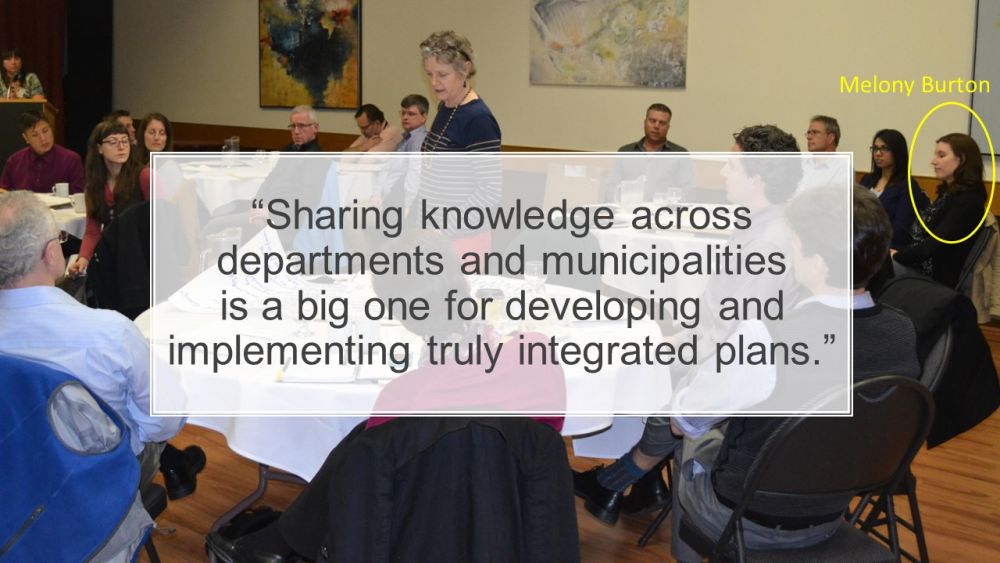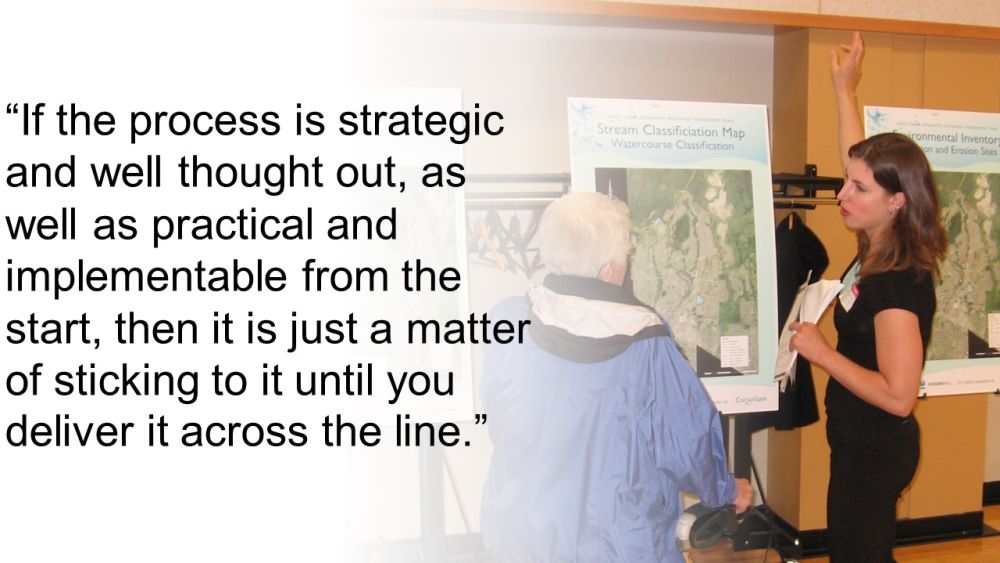DESIGN WITH NATURE TO CREATE LIVEABLE COMMUNITIES AND PROTECT STREAM HEALTH: “Sharing knowledge across departments and municipalities is a big one for developing and implementing truly integrated plans,” stated Melony Burton, Manager of Infrastructure Planning with the City of Port Coquitlam in Metro Vancouver
NOTE TO READER:
Published by the Partnership for Water Sustainability in British Columbia, Waterbucket eNews celebrates the leadership of individuals and organizations who are guided by the Living Water Smart vision. The edition published published on February 6, 2024 features the story behind the story of Melony Burton, Manager of Infrastructure Planning with the City of Port Coquitlam in the Metro Vancouver region. Melony Burton’s actions in driving positive change are guided by her no-nonsense approach to keeping it simple, practical and implementable.

STORY BEHIND THE STORY: Keep it simple, practical and implementable – extracts from a conversation with Melony Burton
Delivering eight asset management plans in three years speaks to the track record and credibility of Melony Burton as an agent of change.
“This was at the same time as rolling out a new Master Transportation Plan and updated Development Cost Charge Bylaw with few staff, or no staff support,” Melony Burton explains with pride.
Take action, start small, stay practical
“In my work, I continue to apply the ten principles that I developed at Coquitlam when we delivered nine Integrated Watershed Management Plans in just 10 years. Three of the 10 are universally applicable to any area of infrastructure planning: take action, start small, stay practical.
“Staying true to these has helped me deliver so much. Develop a really good strategy coming out of the gate and stay super focused. Do not go down rabbit holes. You can always circle back later.”
“Rather than just diving in, start with getting the lessons learned from what others have tried first. What is working for them. What is not. Then start your strategy.”

Story of the Development Cost Charge Bylaw
“When I looked at the history of the DCC Bylaw updates in Port Coquitlam, for example, staff had tried to take it forward several times. They would almost get to the finish line, then trip and fall.”
“Each time, it seems that they started fresh instead of looking at why the previous attempts had failed. The first thing I did was look at WHY THEY FAILED. They tripped over being too complicated or getting sidetracked.”
“Keeping it simple and basic is what got the DCC Bylaw over the line. In five years, we can update it and make it more complex if we need to. Now we at least have an updated bylaw adopted.”
Build on experience: don’t re-invent the wheel
“While I was with Coquitlam, I chaired the Metro Vancouver Stormwater Interagency Liaison Group. That was a phenomenal experience. Being in that role also offered an opportunity to chair the technical working group that developed the monitoring and adaptive management framework for the Metro Vancouver region.”
“The regulatory requirement for developing an Adaptive Management Framework was spelled out in the Minister of Environment’s letter of approval for Metro Vancouver’s visionary Integrated Liquid Waste and Resource Management Plan.”

Do more of what works
“The purpose of the Adaptive Management Framework is to measure watershed health. How well are your ISMPs working? We kept it simple, practical and implementable for a reason. You are not going to measure everything every five years because it is unaffordable when you have multiple watersheds or limited resources.”
“If you were to go back every five years and check, could you see your watershed health improving? How many of your recommendations have you implemented? ARE THEY WORKING? If they are, do more of those. If they are not working, reallocate your resources to doing more of the things that are working!”

Stay true to the fundamentals
“I have heard some people questioning the simplicity of the framework without taking the time to UNDERSTAND WHY IT WAS IMPLEMENTED THE WAY IT WAS IN THE FIRST PLACE. There again is this desire to change things or make things unnecessarily complex.”
“And that is why I constantly stress keeping things simple, practical and implementable. You have the option to build in complexity over time. But that would depend on whether you have the resources to do that; and whether you are already covering the fundamentals. But often adding complexity comes at the cost of the fundamentals.”

Realistic and Achievable
“Be realistic in setting timelines. That is what I really picked up on with the 100-Year Plan for implementing the Bowker Creek Blueprint in the Capital Region. Otherwise, it is a recipe for failure.”
“When you have too many goals and objectives, you end up with a plan that cannot be implemented, and a timeline that is unachievable. You need to narrow your focus and give yourself time to get it done,” concludes Melony Burton.

TO LEARN MORE:
To read the complete story, download a copy of Living Water Smart in British Columbia: Keep it simple, practical and implementable. The downloadable version includes a Bonus Feature – the complete conversation with Melony Burton.
To read the complete story, download a copy of Living Water Smart in British Columbia: Keep it simple, practical and implementable. The downloadable version includes a Bonus Feature – the complete conversation with Melony Burton.
DOWNLOAD A COPY: https://waterbucket.ca/wcp/wp-content/uploads/sites/6/2024/02/PWSBC_Living-Water-Smart_keep-it-simple_2024.pdf


